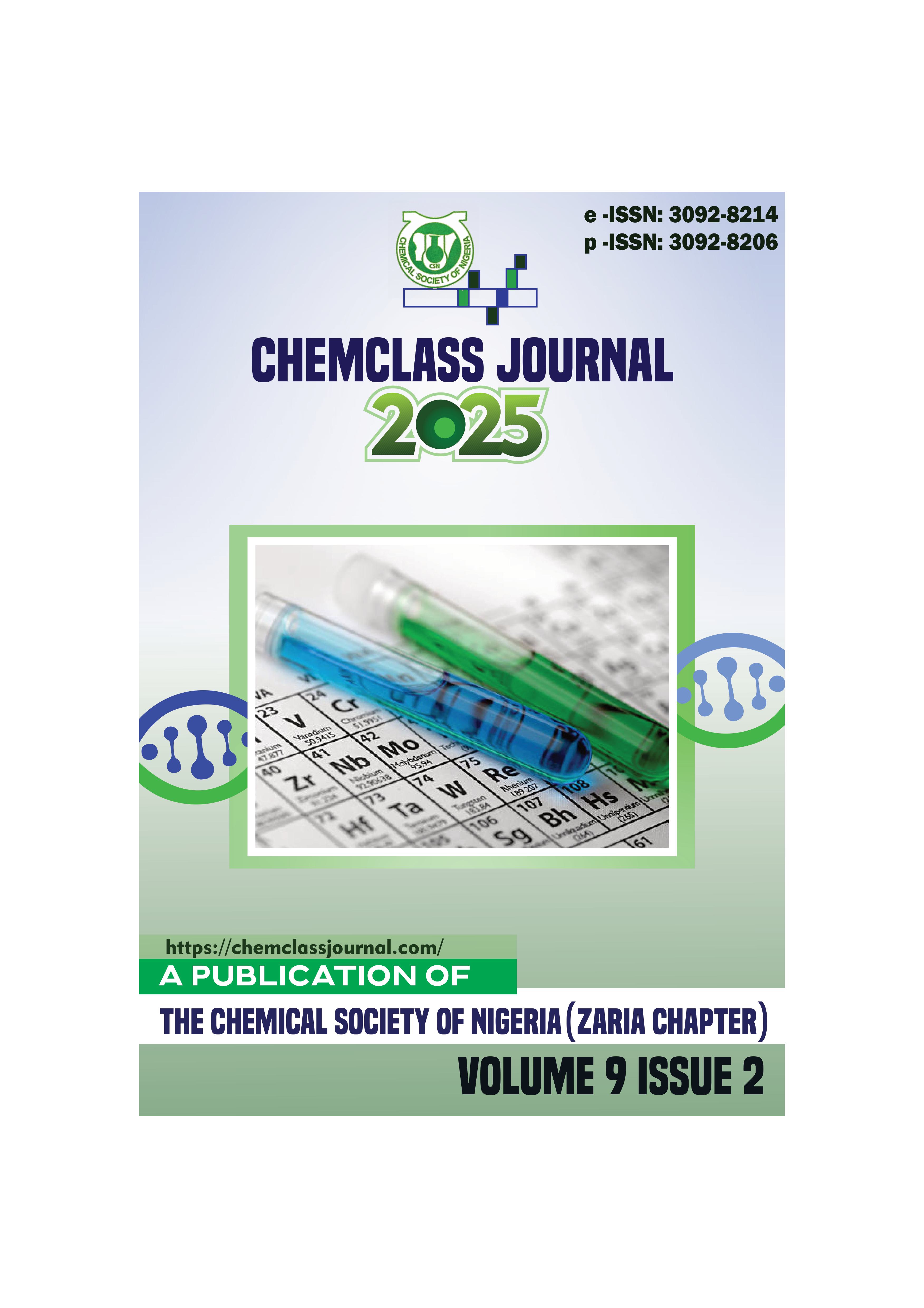UV-Vis, XRD, FTIR, SEM, and PSA-Based Characterization of Copper and Iron Nanoparticles Synthesized Using Spondias mombin (Hog Plum) Leaf Extract
DOI:
https://doi.org/10.33003/chemclas-2025-0902/178Keywords:
Biosynthesis , Characterization , Copper nanoparticles, Iron nanoparticles , Spondias mombinAbstract
This study examines the biosynthesis and characterization of copper and iron nanoparticles (CuNPs and
FeNPs) using Spondias mombin leaf extract. The extracts serves as a reducing and stabilizing agent in the
formation of nanoparticles. The leaves were collected, identified, and subjected to ethanolic extraction. This
was followed by the biosynthesis of nanoparticles via reaction with Cu(NO₃)₂ and FeCl₂ solutions.
However, the reactions was done under controlled heating and stirring resulting to a color change. Color
changes from blue to reddish brown indicate CuNPs formation and from clear to dark brown for FeNPs. To
characterize the synthesized nanoparticles, a range of analytical tools was used. These included UV-Visible
spectroscopy for optical properties, XRD for crystallinity, and SEM for surface morphology. Additional,
FTIR was used to identify functional groups while PSA was used to provide insights into size distribution
and monodispersity. From the result obtained, UV-Vis spectra confirmed the presence of surface plasmon
resonance. Its absorption peaks ranges between 210–800 nm for CuNPs and 230–770 nm for FeNPs,
respectively. XRD showed diffraction peaks confirming crystalline CuNPs, Cu₂O, FeNPs, and Fe₂O₃. The
particle sizes ranges from 18.87 to 19.66 nm. SEM analysis on the other hand revealed irregularly shaped
particles averaging 26.1 nm, while FTIR spectra identified functional groups such as O–H, C=O, and N
H. These functional groups confirms the involvement of polyphenols and other phytochemicals in
nanoparticle synthesis. PSA results showed that 0.01 M concentrations produced well dispersed CuNPs and
FeNPs with sizes of 44.61 nm and 45.89 nm, respectively. These findings confirm that S mombin is an
effective, eco-friendly option for producing metal nanoparticles with potential uses in antimicrobial
applications.





 ChemClass Journal
ChemClass Journal
